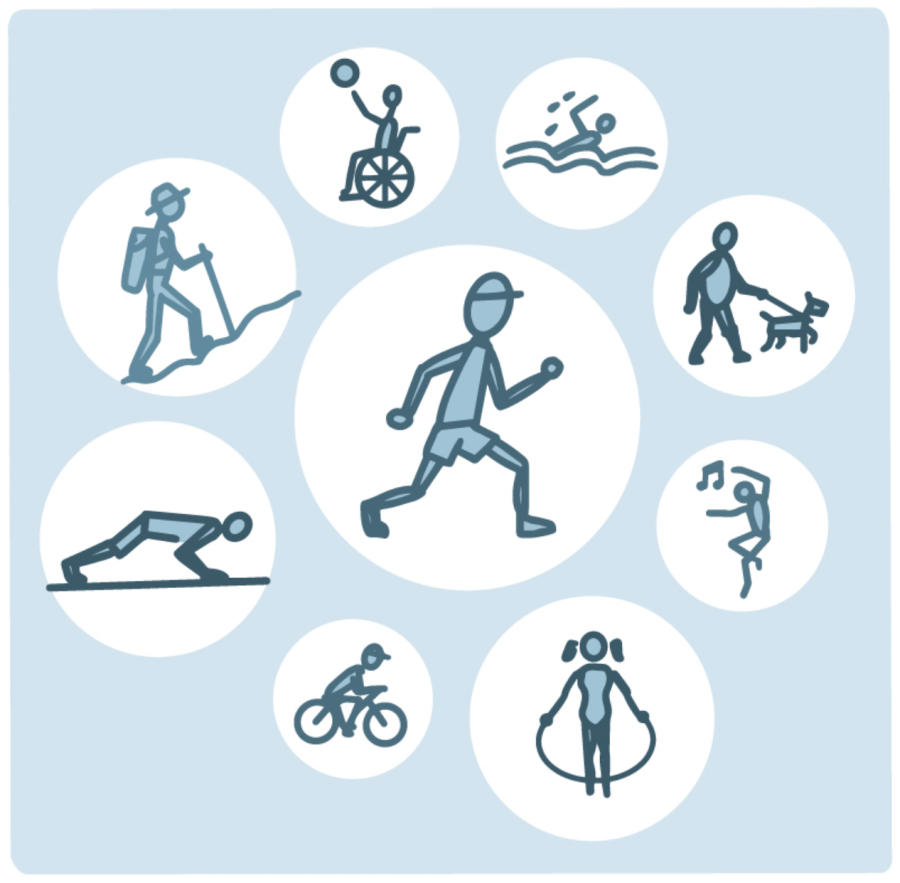Physical Activity at an Online School
Physical activity can take many shapes and forms, such as dancing, biking, running, and hiking.
Physical activity has many health benefits, such as improving brain health, weight management, and bone and muscle strength. However, an online environment such as that of OHS impacts some students’ abilities to get as much physical activity as they would at an in-person school that has set P.E. classes and routines.
One anonymous student shared that their physical activity makes them feel “great.” During exercise, the body releases chemicals called endorphins, which dampen the pain receptors in your brain. They also trigger a reaction that induces a happy feeling. This feeling was also echoed by an anonymous ninth grader who shared that their fifteen hours of physical activity per week made them feel refreshed and less stressed. Jude Loza, a full-time freshman, added “I am usually tired, but I enjoy playing sports such as tennis and basketball so it’s fun.” Another part time seventh grader said that they feel “refreshed (also a bit tired), it’s a nice mental reset from the daily stresses of homework.”
The amount of physical activity students get can be reduced, however, one of the effects of going to an online school. Kara Lee, a full-time tenth grader, shared that she “definitely [moves] less compared to when [she] went to a brick and mortar school,” but does not think that the decrease is too large. This sentiment was also echoed by an anonymous eight grader, who shared that they would probably be doing more exercise in a physical school. “I feel like there will be much more physical activity at a brick-and-mortar school due to just walking around hallways constantly, gym class, etc.” added an anonymous seventh grader. A tenth grader described their experience as: “I definitely think it’s essential to have some kind of scheduled physical activity when you go to school online.” One solution that the OHS has implemented to combat this problem is to have four semesters of a physical education or wellness program required to graduate. The course includes submitting a log of physical activity every month.
In contrast, another OHS student shared that going to an online school full-time hasn’t really affected the amount of physical activity they get. An anonymous twelfth grader shared that they “love the endorphins and the sense of accomplishment after a hard workout”, and that they “honestly think it [online school] has let [them] get more physical activity.” Breaks between classes can be great times to exercise, and going to an online school has freed up more time for them to go on morning runs or hikes. “Homeschooling allows me to do more hours and still get a good education,” says Annabelle Muir, a competitive gymnast.
Aditya, a full-time eighth grader, said “I used to be a lot more active in my physical school. In OHS, even if you exercise every day, it’s tough to move around between classes and work, so a more conscious effort is needed.” Going to a physical school includes walking between classes and other areas, which does not come naturally with an online school. Similarly, an anonymous eighth grader shared that “… sports isn’t included in the OHS curriculum, unlike other PE stuff, sports often gets people motivated (because of the competitive background) and it’s also more fun and OHS is missing out in that aspect.”
Exercise can be something to relax oneself, and a way to keep one’s body healthy. However, an online environment can greatly diminish this for some people. OHS students are affected by the online environment in different ways, with some taking advantage of the unorthodox class schedule to fit more exercise, and others getting less activity than they would at a physical school.

